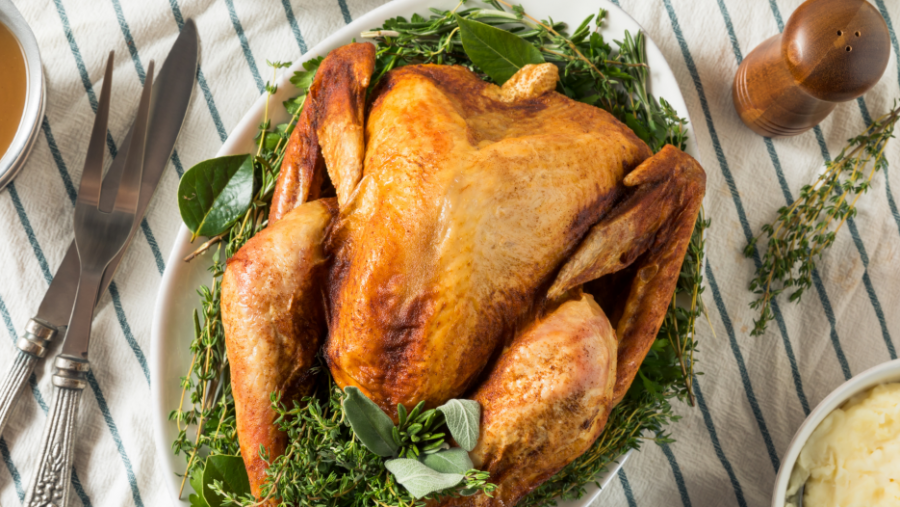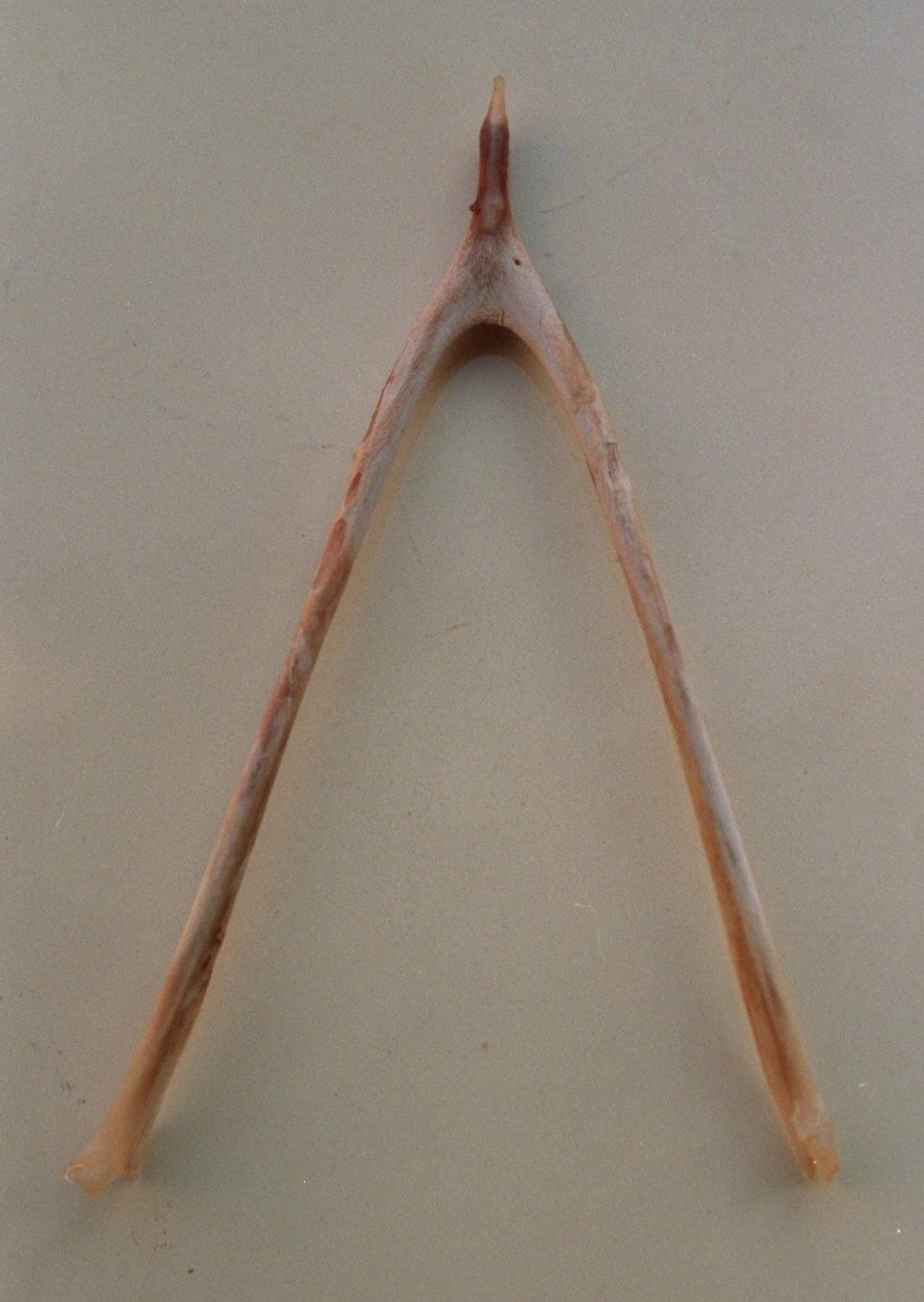Thanksgiving wishbone: What to know about the furcula, and how to break it
- Oops!Something went wrong.Please try again later.
Have you ever broken a furcula on Thanksgiving? We bet you have. Furcula is the anatomical name for a bird's wishbone. On Thanksgiving, the furcula is much sought-after to make a wish.
But at Thanksgiving, you've probably never heard anyone say, "save the furcula to make a wish."

No, we call it the wishbone.
But why is it called the wishbone? And when you make a wish holding the wishbone what does it mean?
Before you cry foul (sorry, we couldn't resist), here's how the tradition began and how to come out a wishbone winner with tips from University of Michigan scientists.
More: 10 common questions about Thanksgiving cooking, answered
More: Here's why you should brine your turkey
What is the wishbone?
Technically it's called the furcula and acts to strengthen the thoracic skeleton, supporting the wing strut. Its name means "little fork" in Latin.
“The furcula is the fusion of the two separate clavicles of the turkey at the top of the breast,” Bill Nolan, of the Butterball Turkey Talk-line, recently told Reader's Digest.

Most cooks remove the bone after roasting and carving the turkey to save for making a wish. But Nolan says it's best to locate the wishbone, remove it before roasting and let it dry out as much as possible.
"Many people like to break the wishbone after dinner, but ideally you want the bone to dry out before the breaking,” Nolan says. If the turkey wishbone isn’t sufficiently dry, you won’t experience that signature snap.
Culinarians such as the late Julia Child concur on removing the wishbone before roasting because it helps facilitate carving, making for nicer, even slices.
The tradition of breaking the wishbone didn't start in the U.S. or with the first often cited Thanksgiving when the Pilgrims gathered with the Wampanoag Indians sometime in the autumn 400 years ago.
It's a custom that dates back at least 2,400 years, according to Panati's Extraordinary Origins of Everyday Things by Charles Panati (Chartwell Books, $19.94), to ancient Etruscans. The Etruscans were an Italian civilization in Italy before the founding of Rome.
Etruscans saved the furcula of chickens, setting them in the sun to dry out, according to Panati, believing the birds were sacred and possessed power. At first, they wished on unbroken bones and only gently stroke the wishbone and make a wish. The ancient Romans adopted the custom from the Etruscans.
Ultimately, there weren't enough wishbones to go around for everyone who wanted to make a wish. "It sprang from a simple case of supply and demand," Panati wrote.
With not enough wishbones, the custom of two people pulling apart the wishbone while making a wish was born. Once the wishbone is pulled apart, it’s the person left with the bigger part who is the winner or said to have their wish granted.
If both parts were equal in size, both people would get their wish.
The breaking and wishing on the wishbone tradition made its way around Europe. Eventually, the tradition made its way to the English who called the bone "merrythought." When the Pilgrims arrived in Plymouth, Massachusetts, they found turkeys had similar clavicles like chickens and began the same custom.
How to get a bigger part of the wishbone
Research, of course, has been done on how to win and get the bigger part of the wishbone. And it was done right here in Michigan.
In 2014 by scientists from the University of Michigan, according to a turkey tradition facts and worksheet from kidskonnect.com. The scientists worked with 3D models of wishbones.
Make sure your hands are dry. This gives you a better grip of the bone.
Hold the wishbone between your thumb and forefinger.
Be sure to have a good grip of the bone using your dominant hand.
The closer your grip is to the base or center of the “V”, the better.
Choose the thicker side of the bone. This puts more stress on the other person pulling.
Let the other person do most of the pulling. The person who pulls more will have the greater tendency to have their side break.
Source: kidsconnect.com
Thanksgiving traditions
Abraham Lincoln declared Thanksgiving a national holiday.
The word "wishbone" first known mention referring to a turkey bone was in an 1842 article in The Sun newspaper in Baltimore, Maryland, according to makeitgrateful.com.
A wishbone must be completely dry to have a perfect break. If not dry, it will only bend.
You can dry it in three different ways: Dry it for a whole year, from Thanksgiving to Christmas. or dry it quickly in an oven.
In 2017 "Wishbone" was the name of the backup turkey to "Drumstick," the turkeys pardoned by then President Donald Trump. The annual turkey pardon tradition started with Harry Truman.
In a recent Reader's Digest article on Thanksgiving quotes, Reba McEntire said “To succeed in life, you need three things: a wishbone, a backbone, and a funny bone.”
Contact Detroit Free Press food writer Sue Selasky and send food and restaurant news to: 313-222-6872 or sselasky@freepress.com. Follow @SusanMariecooks on Twitter.
Support local journalism and become a digital subscriber to the Free Press.
This article originally appeared on Detroit Free Press: Thanksgiving wishbone: What to know about the furcula

